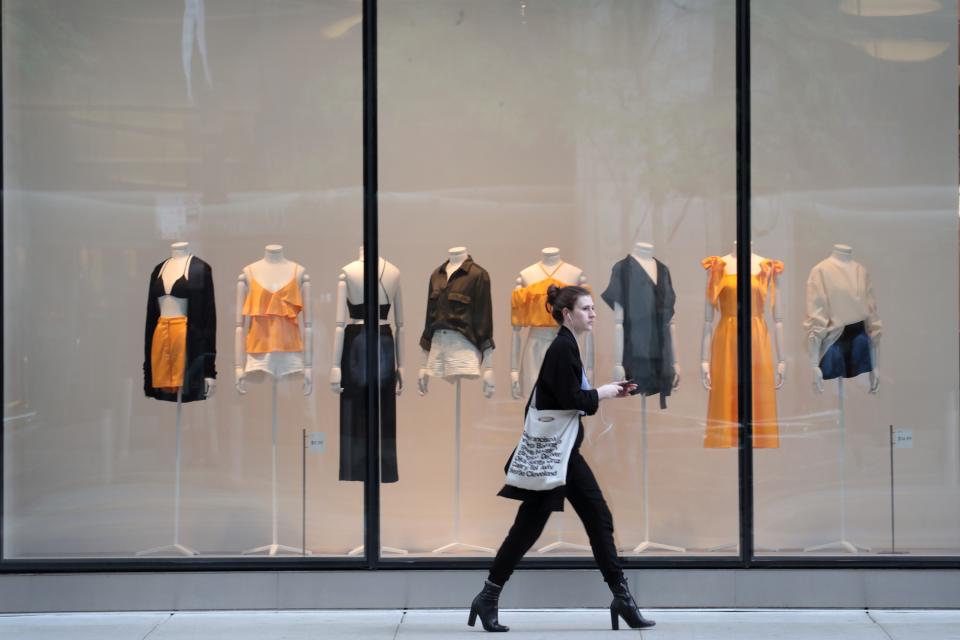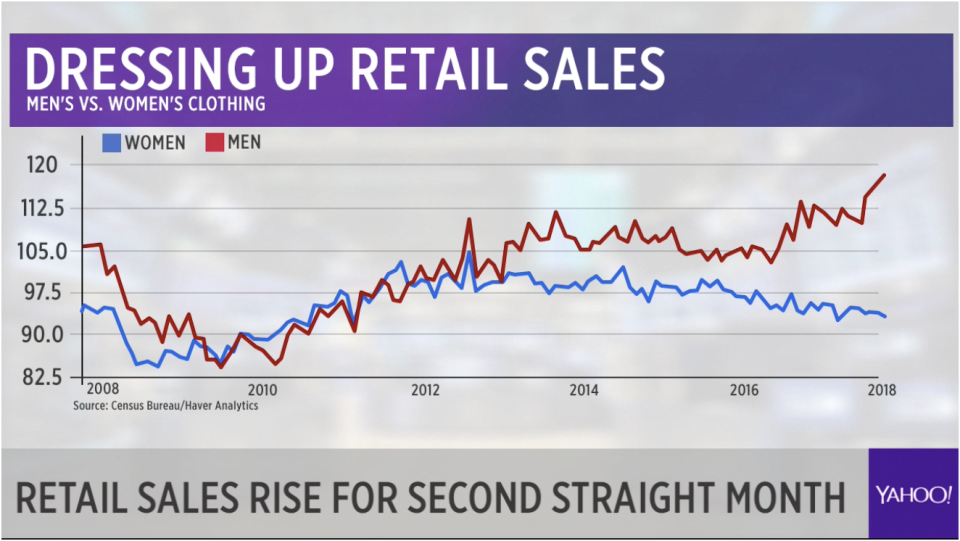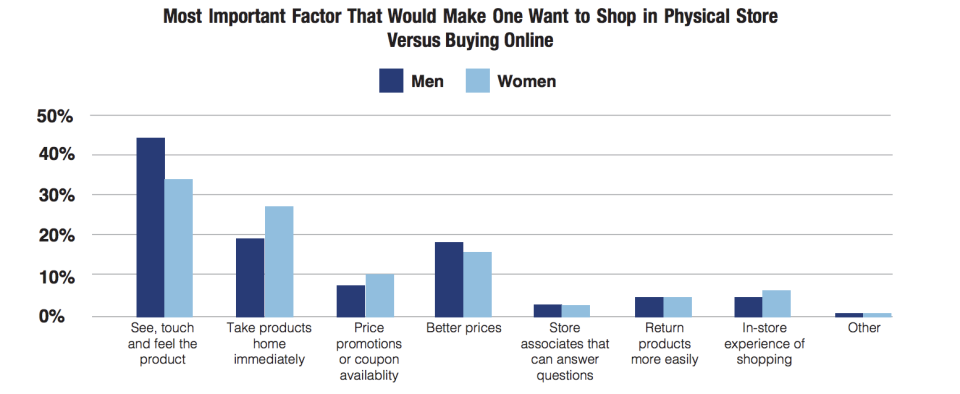Retail data exposes a key difference between men and women shoppers

Clothing stores have been making more money from men than women in recent years— at least offline, according to Census data from 2008 to 2018. This data suggests that men would rather shop in-store rather than online.
In the chart below based on this data, we can see that men are buying more from clothing stores, and have steadily outpaced women since 2012.
The main reason for this divergence, as highlighted by Renaissance Macro Research’s Neil Dutta, was that the data did not factor in e-commerce.

“I think it is possible that women are gravitating more to online shopping while men still buy in the store,” said Dutta, the managing director and the head of research at Renaissance Macro. “Women buy online, try clothes on and send back what they don’t like.”
“Given how the Census defines these retail categories,” said Dutta, “the divergence makes sense.”
The Census defines retail sales by looking at brick-and-mortar establishments, not electronic home shopping, mail-order, or direct sale figures.
Previous data backs up Dutta’s conclusion. In a 2017 survey by First Insight, analysts found that men made fewer purchases online than women, with only 22% of male respondents reporting that they shopped often on mobile devices compared to 40% of women. Moreover, the survey found that men are more likely to “shop in-store at full price retailers than women, indicating that the ability to touch and feel a product is a main driver that takes them in-store.”

In an email to Yahoo Finance, First Insight founder and CEO Greg Petro said that online shopping habits did differ across age. For example, among millennials, they saw that usage was “pretty equal among men and women,” where 47% of men and 50% of women reported that they frequently or very frequently shopped on their mobile devices.
Still, by and large, Petro has noted that the data has “unearthed a significant gender gap between how men and women shop and make purchase decisions.”
Read more:

